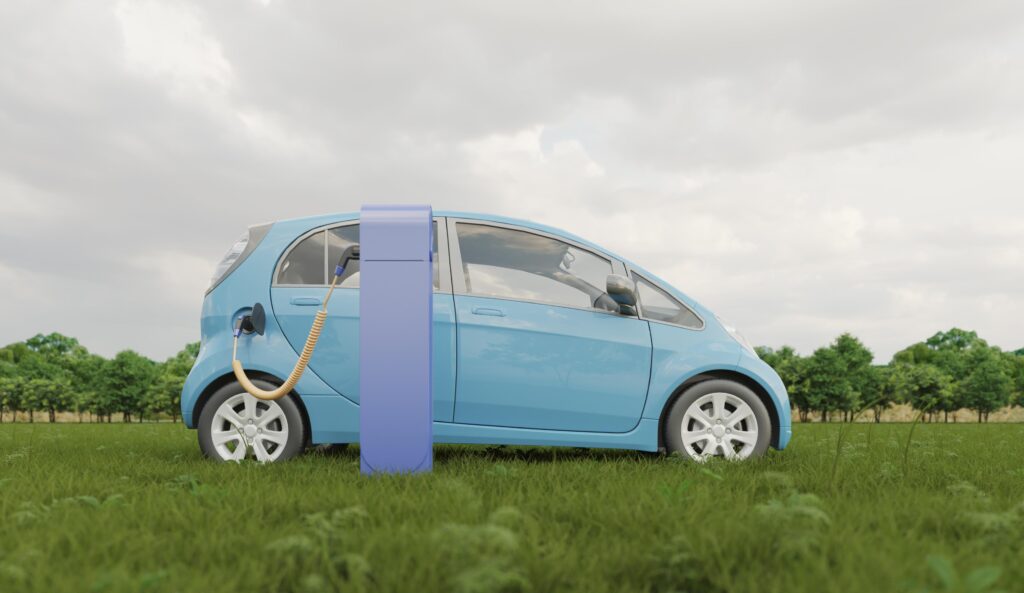Table of Contents

Electric vehicles (EVs) are scorching the streets of India! With over 1 million EVs cruising around in 2022 (according to the Government of India’s Vahan portal), it’s undeniable that electric is the path forward. But with many varieties, selecting the right EV can feel like navigating a labyrinth. Fear not, future eco-driver! This blog post will simplify your decision-making process by guiding you through India’s various types of electric vehicles.
Gearing Up for the Diverse World of Electric Vehicles in India
Battery Electric Vehicle (BEV)
The OG of EVs, BEVs are pure electric powerhouses. Imagine a car fueled solely by rechargeable batteries—that’s a BEV! There are no gas stations, no emissions, just clean energy propelling you forward. When you apply the brakes, the BEV ingeniously uses its electric motor like a supercharger, regenerating power back into the battery and extending your driving range.
- BEV Essentials: Battery pack, Electric motor(s), Inverter, Control module, Drive train, Charge port.
Ready to see some BEVs in action? Check out these hot rods:
The Tata Nexon EV, Hyundai Kona, Mahindra XUV300 EV, MG ZS EV, and BMW iX—all waiting to be your electric companion!
Hybrid Electric Vehicle (HEV)
Think of HEVs as the tag team champions of the EV world. They combine an electric motor with a reliable gasoline engine. The electric motor is powered by regenerative braking, which occurs when you slow down and the engine itself. This eliminates the need for a separate charger and provides superior fuel efficiency and a longer driving range.
HEV Subtypes: There are two main contenders in the HEV ring:
- Mild Hybrid Electric Vehicles (MHEVs): These are like the training wheels of HEVs. They use a small electric motor and battery to give a little extra boost to the gasoline engine, especially for features like air conditioning.
- Full Hybrid Electric Vehicles (FHEVs): FHEVs are the complete package. They can run on an electric motor, gasoline engine, or a tag-team combo depending on driving conditions.
HEV Must-Haves
Internal combustion engine, Electric motor(s), Battery pack, Inverter, Control module, Drive train, Fuel tank (and a charge port in some models)
Want to see some HEVs in action? Here are a few all-stars:
The Toyota Prius, Honda City eHEV, Maruti Suzuki Grand Vitara, and Volvo XC90—all ready to be your hybrid hero!
Plug-in Hybrid Electric Vehicle (PHEV)
PHEVs are the ultimate EV powerhouse. They’re like HEVs with a superpower—a bigger, rechargeable battery pack! This lets you enjoy electric driving for shorter trips and then switch to the gasoline engine for longer journeys. PHEVs offer the best of both worlds – electric power and extended-range anxiety relief.
PHEV Powerhouse Parts: Internal combustion engine, Electric motor(s), Battery pack (bigger than a standard HEV), Inverter, Control module, Drive train, Fuel tank, Charge port, Exhaust system
Ready to meet some PHEVs?
Look at the Volvo XC90 Recharge, Porsche Cayenne, and Toyota RAV4—all waiting to be your plug-in partner!
- Fuel Cell Electric Vehicle (FCEV): FCEVs are the tech wizards of the EV world. They use cutting-edge hydrogen fuel cells to generate electricity, which then charges the battery pack. Think of them like electric cars that refuel in minutes at hydrogen stations, similar to gasoline or diesel vehicles. However, it’s important to note that hydrogen infrastructure is still developing in India.
- FCEV Tech Specs: Battery pack, Electric motor(s), Inverter, Control module, Drive train, Fuel cell stack, Fuel tank
- Spot these FCEVs on the road (or soon to be on the road): the Hyundai Tucson FCEV, the Toyota Mirai, and the Honda Clarity Fuel Cell—all leading the way in hydrogen-powered driving!
Conclusion: Finding Your Perfect Electric Match

The Indian EV market is brimming with exciting options! Consider your driving needs, `charging infrastructure availability in your area, and your budget. With this knowledge of the different EV types as your guide, you’re well on your way to selecting the perfect electric vehicle for your eco-conscious adventures!

